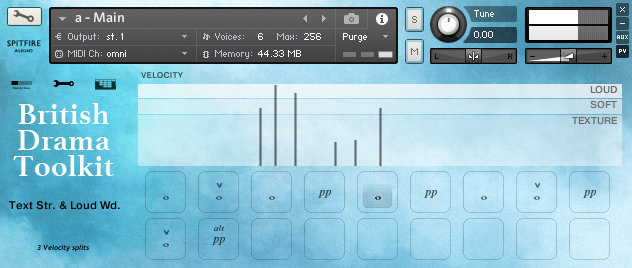Pursuing originality in music is one thing; trying to be constantly original in the pressured world of episodic television scoring is something else entirely. By brilliantly achieving both of those traits, talented composer Samuel Sim has won multiple awards as a writer of quality, gritty, and deep television and film drama scores. So, having previously worked with Spitfire Audio to realise his namesake SAMUEL SIM - CHRYSALIS library — launching a unique and inspirational sound set centred around a stunning, deep sampled studio harp, but bent into a collection of fresh sonic tools to critical acclaim in 2015, it is hardly surprising that he (re)turned to Spitfire Audio when wanting to create an instrument that put up no roadblocks between musical ideas and their realisation as ready-to-go cues.
Watch Spitfire Audio’s touching trailer video for British Drama Toolkit here
Watch fellow Spitfire Audio Director Christian Henson’s helpful
British
Drama Toolkit contextual video here
Watch Spitfire Audio Director Paul Thomson’s ‘traditional’ video
walkthrough
of British Drama Toolkit here:

Director Christian Henson, fellow co-founder of Spitfire Audio, adds, “I’m incredibly excited about the British Drama Toolkit, which is designed by a drama media composer, Sam Sim, for us fellow media composers. It really is an amazing, inspiring, time-saving tool that can be used on a variety of different applications, but it has that kind of gritty, very emotional British drama feel to it. Basically, it’s a bunch of ensembles — some strings, some woodwinds — recorded here on our dry stage, but, instead of using controllers, it’s very much a two-handed thing, whereby different velocities give you different kind of degrees of intensity and movement.”
Musically speaking, the honesty and rawness of British dramatic scoring is ingrained in the British Drama Toolkit library. Lest we forget, though, this is not just a library that plays a composer’s music, but rather helps them compose it. Indeed, all it takes is ideas. Originality, of course, is optional, yet highly recommended… just ask its award-winning designer, Samuel Sim!
British Drama Toolkit can be purchased and digitally downloaded for a time-limited introductory promo price of £149.00 GBP (inc. VAT)/$149.00 USD/€149.00 EUR (inc. VAT) until August 9, 2018 — rising thereafter to a RRP of £199.00 GBP (inc. VAT)/$199.00 USD/€199 EUR (inc. VAT) — from here: https://www.spitfireaudio.com/shop/a-z/british-drama-toolkit/
British Drama Toolkit needs Native Instruments’ free KONTAKT PLAYER (5.6.8 or higher) — included in the purchase — to run as a fully NKS (NATIVE KONTROL STANDARD®) supporting plug-in instrument for Mac (OS X 10.10, 10.11, or macOS 10.12 — latest update) or Windows (7, 8, or 10 — latest Service Pack, 32/64-bit), while Spitfire Audio’s free Download Manager application allows anyone to buy now and download anytime.
For more in-depth information, including some superb-sounding audio demos, please visit the dedicated British Drama Toolkit webpage here:
Spitfire Audio is a British music technology company producing high-quality virtual instruments and sample libraries. The company collaborates with the world’s best composers, producers, engineers, and studios to create detailed and realistic recordings of instruments and sounds for use in computer-based music production. Prominent collaborators include Hans Zimmer, AIR Studios, Eric Whitacre, and many more.
© 2018 Spitfire Audio Holdings Limited





























